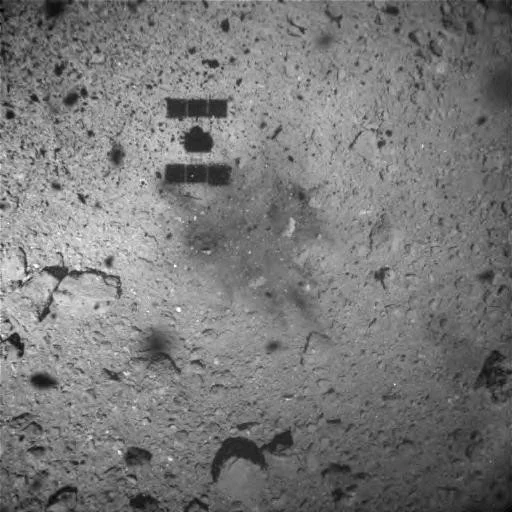Topics/Science
The first asteroid mining missions may not happen for a decade or more, but government agencies and private companies are steadily working towards making it a reality. As some groups work the engineering and business challenges, others are looking at the scientific and legal challenges. One such challenge is dealing with debris in a microgravity environment.
As of today, 13 November 2019, JAXA’s Hayabusa2 spacecraft is on a year-long journey back to Earth after nearly 17 months exploring the asteroid Ryugu. JAXA has flawlessly executed the mission so far, building upon lessons learned from the first Hayabusa mission. After one of the fastest atmospheric entries ever, the samples will provide invaluable insight into pristine asteroid regolith.
A science team led by Alessondra Springmann found that heating up various types of carbonaceous chondrite meteorites released water as well as other volatile and toxic trace elements. Water is likely one of the very first resources that will be sourced from space for use in space. It is versatile for a variety of applications, including rocket propellant, consumption by astronauts, and bulk radiation shielding.
In-space manufacturing promises to be a key driver for developing space resource technologies. Building and assembling large structures in space allows the use of efficient designs that don’t require robust structures for the one time g-force requirements of launch. Made In Space has recently proposed a long-baseline interferometer that uses in-space manufacturing techniques for assembling opposing booms up to 50 m (164 ft) in length from a 24U small-sat chassis.
Water has been directly observed from two samples returned from the S-type asteroid Itokawa. It was hypothesized that S-type asteroids contained low concentration water bearing minerals due to light curve data and studying similar minerals on Earth. However, the two Itokawa samples contained high concentrations of water at 698 and 988 parts per million weight, respectively. This holds great promise for asteroid processing targets if similar S-type asteroids have similar water concentrations.
An international team of Chinese, American, and Russian scientists may have conducted the most extensive study of lunar Permanently Shadowed Region (PSR) ice yet performed. By comparing the reflections from flat surfaces in major PSRs to those of adjacent non-PSRs, they determined that the vast majority contain ice. However, the ice appears to be restricted to the uppermost surface.
Lava tubes on the Moon represent an enticing location for establishing lunar habitats. In addition to providing protection from radiation and meteorites, lunar lava tubes have a stable temperature range compared to surface conditions. These characteristics will allow the building of safe, yet economical habitats in lava tubes. However, we must first explore and categorize lava tubes before establishing the first settlements in them. One likely platform for enabling this exploration is via the Moon Diver mission and the tethered Axel rover.
Although multiple landers and rovers have touched down on the Moon, no vehicle has visited the Permanently Shadowed Regions (PSRs) at the lunar poles. Water ice has been observed within some PSRs, and therefore represents an ideal target for future lunar missions. An important unknown to study before the first PSR mission is understanding the surface environment, including how much mass the PSR regolith can support. It is critical that rover wheels and landing pads don’t sink into the regolith. To study this, a recent analysis used boulder tracks to evaluate the bearing capacity of regolith in these areas.
After less than three months in orbit, the NASA OSIRIS-REx mission has already made several discoveries about the Near Earth Asteroid (NEA) Bennu. Most promising for resource utilization is the presence of water-bearing (hydrated) materials. However, the environment is dangerous with particle ejections from unknown sources, many large boulders, and an ever accelerating rotation rate. Asteroid exploration and processing missions are in for a challenge!









Researchers using data from China’s Chang’e 4 lunar lander and Yutu-2 rover were able to confirm many details of the Moon’s farside subsurface that were previously only theory.